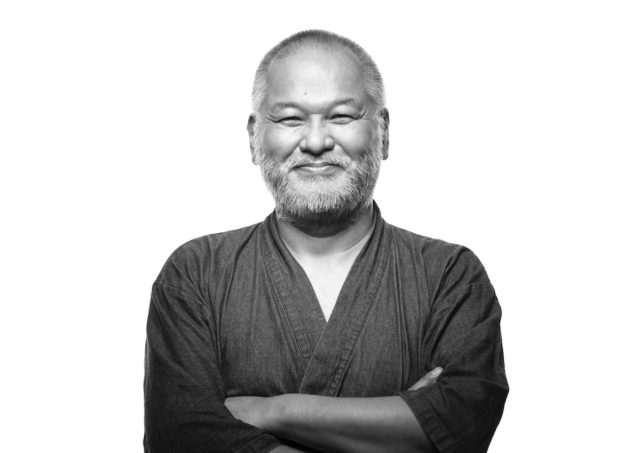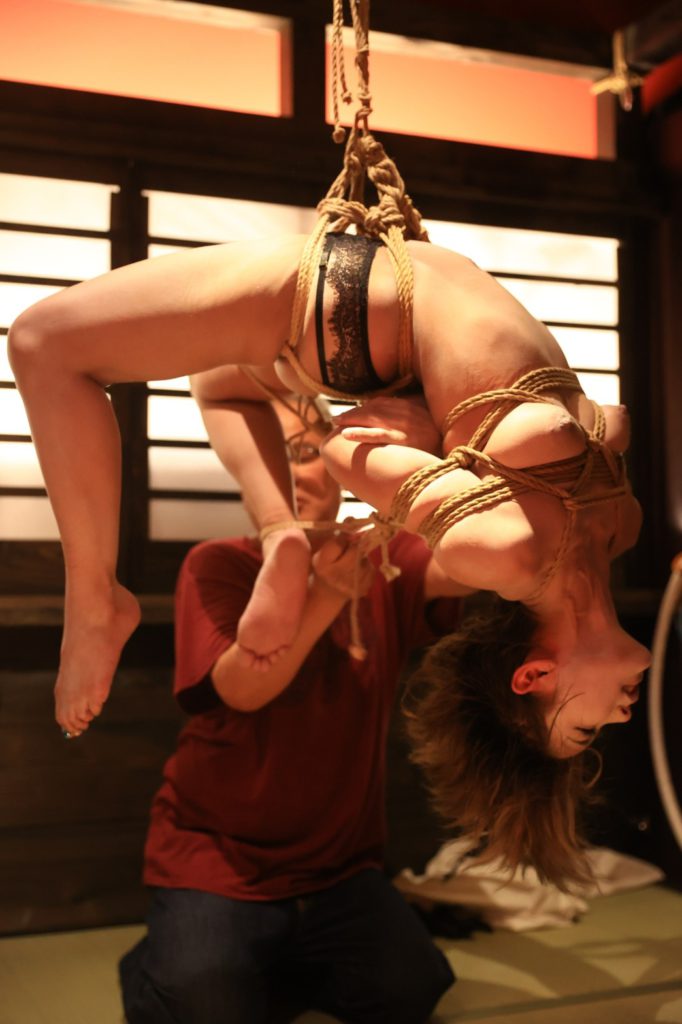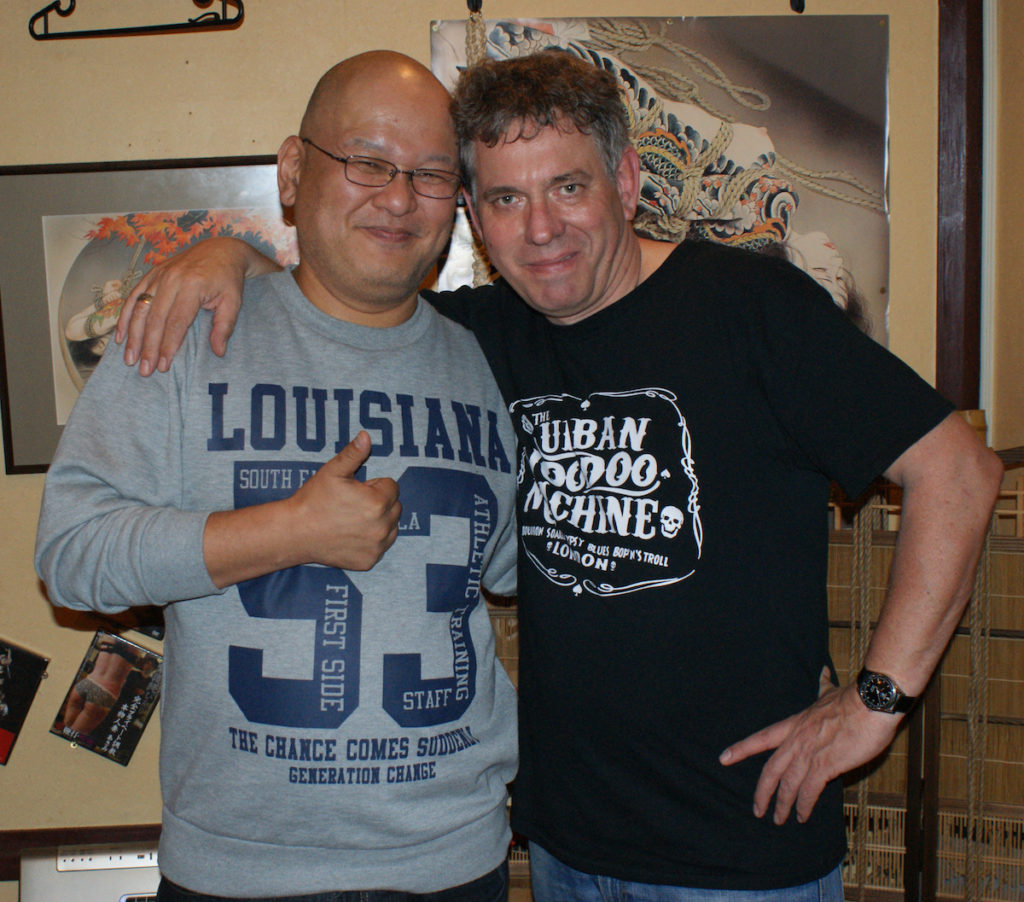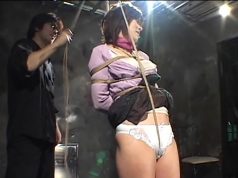Nawashi Kazami Ranki is a professional Kinbakushi who has been actively pursuing his passion for 35 years. He is now one of, if not the most experienced teacher, with more than 2 decades of instructing others, including not only in Japan, but globally.
I caught up with him to ask him about his route into Kinbaku, the path he has forged for himself since, how he teaches, and his views.
Sin: Kazami–san, thank you for taking the time to do this interview with me. I’d like to start at the beginning. Can you please tell me about your first contact with rope bondage and SM?
Kazami: I come from a provincial city south of Osaka in Kansai. I have a younger brother. When I was about 10–years old in elementary school, I found sadomasochism magazines in my parent’s bedroom. I think the magazines were SM Mania, SM Speculum, and SM Collector. They depicted women bound, suspended and chastised. I was shocked. But obviously, curious too.
When I became an adult, I spent most of my time having normal sex until I was 25 years old. But I was getting tired of the normal act, so I made a contact to SM in the dating scene. I got an appointment on the first attempt. I tied a woman up for the first time. But since I was a beginner and she was an expert, it only took one play.
Sin: Being only 4 months older than you, I would say, from communications over the years, that yours is a fairly common story.
You looking for SM play contacts must have before the Internet became popular. So, how did you discover this possibility of SM dating?
Kazami: Back then there was a kind of system for men and women to meet via telephone. In Japan, they were called telephone clubs (Teleclubs). You could go into a type of store where you would wait in a private area. They took the calls that came into the store there, and matched you up with someone. Originally, I used Teleclubs for regular encounters, but as I got tired of those regular encounters, I started using SM–specific Teleclubs.
Sin: I recall the days before the internet, when I was practicing SM in a country where you could be sent to jail for it. I remember it was very difficult to take pictures. We didn’t have digital. We used Polaroids.
It must have been very different in Japan, because then, the pink industry was not so strictly regulated. Did you have any problems with the authorities?
Do you remember the type of the first rope you used?
How did you first learn Kinbaku/Shibari, and which do you prefer to call it?
Kazami: No, we never had any problems with the authorities.
The first rope I used I purchased myself in a sex store. The material was a hard vinyl rope like those used at construction sites. I bought it and took a woman to my own second house to play.
Inside the package with the rope was an instruction manual on how to tie her up, which I followed. I didn’t think it would work right from the start, but I knew I wasn’t on the same level as her (smiles).
As for what to call the bondage, I have no Kinbaku or Shibari obsession. (Even as a Japanese) it is very difficult to classify the words. In my opinion, Shibari binds a person‘s body and Kinbaku binds a person’s mind. If I were to force myself to separate the two words personally, it would be something like that.
Sin: I fully understand that the words Kinbaku and Shibari are interchangeable and unimportant. However, for foreigners who do not understand Japanese, the words are of great interest. I recognise you also note this small nuance between them. I suppose it would be the difference between ‘restraining’ and ‘binding’ (you can bind a package, but you can’t restrain it). One of our greatest challenges is in how it’s sometimes so difficult to transpose between our languages.
So therefore, I’m also interested in why you use the word Nawashi to describe yourself. I note that according to certain friends, notably Ero Ouji, Yoshida Yoi, etc. I’m a Bakushi – because I’m more interested in the sadomasochistic and erotic play, and the psychology, than in the beautiful patterns made with rope. Not being Japanese, I don’t know if that is true or not.
Kazami: As for Nawashi and Kinbakushi, I don’t really see much difference. I’m also more focused on binding for sadomasochistic play than on the beauty of bondage, so I guess I would be a Bakushi in the words of Yoi–san.
Sin: Coming back to your career, you founded Circle M’s in September 1996 at the age of 34. What does the M stand for?
Can you tell us how you became proficient in rope tying before that time? Did you study from SM magazines, learn from VHS videos, or go to Pink Theatres and SM or happening bars?
Kazami: The M stands for Masochist. I founded Circle M’s at first to focus on coupling sadistic men and masochistic women together. Now, Circle M’s doesn’t do matchmaking; putting couples together anymore.
When I started the Circle, I studied the techniques of bondage to a higher level than the members. At first, I referred to Introduction to the Art of Kinbaku published by Sanwa Publishing, and established my own bondage techniques by referring to Nureki Chimuo, Yukimura Haruki and Randa Mai from their VHS videos.
Sin: I would like to ask you about the beginnings of the SM scene in Osaka and Kansai. For example, when did you get acquainted with Aotsuki–san? Also, what kind of people practice SM in Osaka and Kansai? Or did you play with your partner in private?
Who were your biggest influences?
Kazami: I had a hard time in Osaka because the level of rope bondage at that time was lower than in Tokyo. I studied various methods of rope bondage and suspension with the masochistic women I was dating at the time as models.
The centre of the Japanese SM industry is Tokyo. The majority of publishers and video makers were there. Osaka only had a few places when I started doing SM.
I think I first met Aotsuki—san about 25 years ago in a place called J Heaven SM Bar in Osaka. At that time, we called each other by our real names, not Aotsuki or Kazami.
An SM bar is a social place where SM enthusiasts gather to exchange information and find partners. Some people would play at the location, and some would go off and play together in private. At that time, I think the only places that provided a way to meet partners were these SM bars and the Teleclubs.
Back then, the person who influenced me the most was Akechi Denki. His then manageress and model, Yumeji Keijo gave me the opportunity to go to Tokyo, and I have fond memories of being on stage with him. I once asked him that I wanted him to teach me how to tie, but he refused. His reason was, “Kazami–san. You have your own style, so I don’t need to teach you anything”.
Sin: It is very interesting to note that the Japanese SM scene in the 1990s was very open, unlike where I was in England. Maybe this is one of the reasons why Japan became a pioneer in rope bondage. Maybe this is also why the Western rope bondage scene is not as interested in SM and the erotic, and there’s a large quasi–Vanilla element?
We share a mutual friend in Genevieve (Miss Evil Gen) in Brisbane Australia, and I believe she also shares our passion for SM and eroticism. You have visited Taiwan, England, Australia, Canada, France, and the United States to teach. I know from conversations with Shigonawa Bingo, Ero Ouji, Kanna and others how Japanese Kinbakushi are fearful to demonstrate the deeper elements of Kinbaku to the western audiences. I cannot imagine, eg. Kanna doing his enema shows in the west. I also recall Tesshin–san having some problems in Zürich, Switzerland when he used a whip for sadism.
Do you feel that you have to be very careful about showing sadism and eroticism when you visit the west? Is this because you feel they won’t understand and maybe only wish to know how to tie?
Kazami: Well, outside of Japan, we feel we must refrain from sadism and eroticism. Basically, we all have desires. But we are very careful not to get into unexpected trouble.
Even here in Japan, the pink theatres are slowly being forced to close by the authorities.
Sin: Maybe I can help you to change that, and permit you to be, and enjoy yourself when you visit Shibari Lounge, Antwerp in February. It will be great for westerners to understand what I have seen in Japan over the years, and not only the Shibari binding, because it gives a limited impression of Kinbaku.
For many years I have struggled with what foreigners seem to think about Kinbaku. Some seem more interested in learning pretty patterns, other people’s styles, and using other people’s names. Maybe it is sucking the heart out of what is possible, and killing the memory of where it comes from for other reasoning fitted to suit local conditions. Personally, I’d love to see people evolving something new for themselves, and to be enthused by it myself.
Let’s return to the interview. Four years after starting Circle Ms, you began another contact circle in Sanwa Publishing’s Mania Club magazine, and at the same time you started teaching in September 2000.
According to Saikatsu–san’s records, it is well documented that Akechi Denki taught only three students, all women: Raika, Enka, and Kadera, but I don’t know the exact timeline. I believe that Miura–san’s Bakuyūkai was still a study group with some lectures at that time.
There cannot have been many Kinbakushi teaching formally at this time. Akechi Denki had his Phantom shows, and Eikichi Osada had his seminars. But I don’t think these can be considered formal teaching. So, were you one of the first to formally teach? Where did you teach? How did your students find you? What did you teach your students?
Kazami: I’ve been teaching rope bondage since around September 2000, I think.
Akechi was teaching individually. But I remember that he also held study groups in Japan on an irregular basis. As for Akechi’s students, I remember two official ones: Raika and Enka. Enka gave up the name Akechi before his death. As for a third student that I did not know (Kadera), she gave up the name Akechi after his death.
I am aware that Bakuyūkai was created by Takumi Miura with Akechi as its President.
I think the timeline of the bondage instruction in those days was very similar, but I think Akechi was the first to offer private lessons to these 3 women.
My own workshops were taught in rented studios in Osaka and Tokyo. Students would come via looking at the event schedules on the Internet or in magazines such as Mania Club.
What I was teaching was the basic Takatekote, and from there, as I became more advanced, I taught suspension and other techniques.
Sin: You also began performing at SM clubs at the end of 2000. These coincided with those of the previous generation of Kinbakushi such as Akechi, Hikuzo Chiba, Mai Randa, and Eikichi Osada.
How did you feel about performing? Also, what were your specialties? What did you enjoy the most? Who were your biggest inspirations among the Kinbakushi and why?
Kazami: Yes, I began performing at SM clubs, strip clubs and pink theatres. It was a financial thing, and for a period of time at Kujo OS theatre in Osaka I performed for 20 consecutive days, 4 times a day. It was good because I could get a lump sum of money and I didn’t have much income at that time.
The composition of my shows focused on fast Shibari, and I was good at developing my own way of tying. Even now, my performances are still centred on development. We also inevitably did sadomasochism. The best thing was that there were far more places than there are now, and naturally, I became more and more skilled.
I was talking with Osada Steve, and we both agreed that the number of times we were performing at that time helped us improve our skills. We learned how to show SM and eroticism included in the rope bondage.
Akechi, Hikizo Chiba, Mai Randa and Eikichi Osada were performing at theatres in the Kantō area around Tokyo, while I was mainly performing at theatres in Osaka. Later, I went to theatres in the Kantō area. But I never worked with Eikichi Osada.
Sin: You have given so many performances in various places, you are also an instructor, and in 2010 you performed at Yoi Yoshida’s Onawa Asobi in Good Studio (I believe I first saw you at Onawa Asobi 2012, where Nawanojyoh and Aoi–san made me feel so welcome).
It seems that more and more festivals are incorporating both professional and amateur bondage artists. Are there any bondage artists among them that have left a particularly strong impression on you?
Kazami: Yes. Ero Ouji. He never wanted to go professional. Amongst the professionals, I would say Akira Naka.
Sin: Where do you see the future? Do you sense that the old times may be coming to an end, and that the spread of the popularity of Shibari has changed it so much?
Do you think that with so many taking up Shibari for the aesthetic (fashion, glamour), for exercise (sport, yoga), for curative reasons (tantric, meditation), for oriental romanticism or because they think that they‘re doing a combat technique, etc, has diluted the SM and erotic, so that this is now seen as wrong by some? Do you think Kinbaku as we have known it faces the same threats like the pink theatres being slowly closed down in Japan?
Kazami: I believe that times are always changing. Even in the world of music, I think that the transition is very intense.
But I do not know how rope bondage will change in the future. In my opinion, there should be various kinds. I think it would be wonderful if we could all respect and recognize each other’s various ideas, and I hope that the old ways will remain in the process. For example, I think that SM and erotic bondage will be done in a closed place, but not in a public place anymore.
Sin: I have a question about your teaching that would be helpful for potential students to understand what you teach when you come to Europe.
When you teach, in addition to technical rope tying, do you also explain anatomy and psychology?
Noting what Akechi told you a long time ago about having your own style, do you encourage your students to use what they learn to evolve themselves and their own styles?
Kazami: I teach something more akin to anatomy than psychology. In the case of the Takatekote, I teach by explaining where the rope should be placed, tension, etc. I also teach my own style of tying techniques.
What do I think about people who insist on other people’s styles? First of all, I think we have to recognize that there are so many different styles of rope bondage: Naka–style, Kanna–style, Yukimura–style, Kinoko–style, Kazami–style, etc. We must respect them. Each of them has a different way of tying, but that is individuality as people say, and we should not deny individuality.
I think you can go on to create your own original style after mastering one of these styles and understanding the other tying styles.
Sin: Kazami san, you have taught me something. When I was doing rope bondage in the 1980s and 90s it was a different world: in a society where SM was considered deviant, even criminal. I had no resources at all. I was entirely self-taught and developed my own style. I am of the London punk generation, and we were very self–sufficient.
My Kinbaku style developed more during the last 20 years when I started visiting SM bars and pink theatres in Japan. I started to see other possibilities, absorbed and evolved them.
Today, everything has changed a lot and resources like yours are now available. People who like rope bondage can learn from people like you much faster than I did, and, if they want to and are capable, can evolve their own styles.
Thank you.
Nawashi Kazami Ranki will be teaching and performing at Shibari Lounge Antwerp, Belgium, February 23–26, 2023









